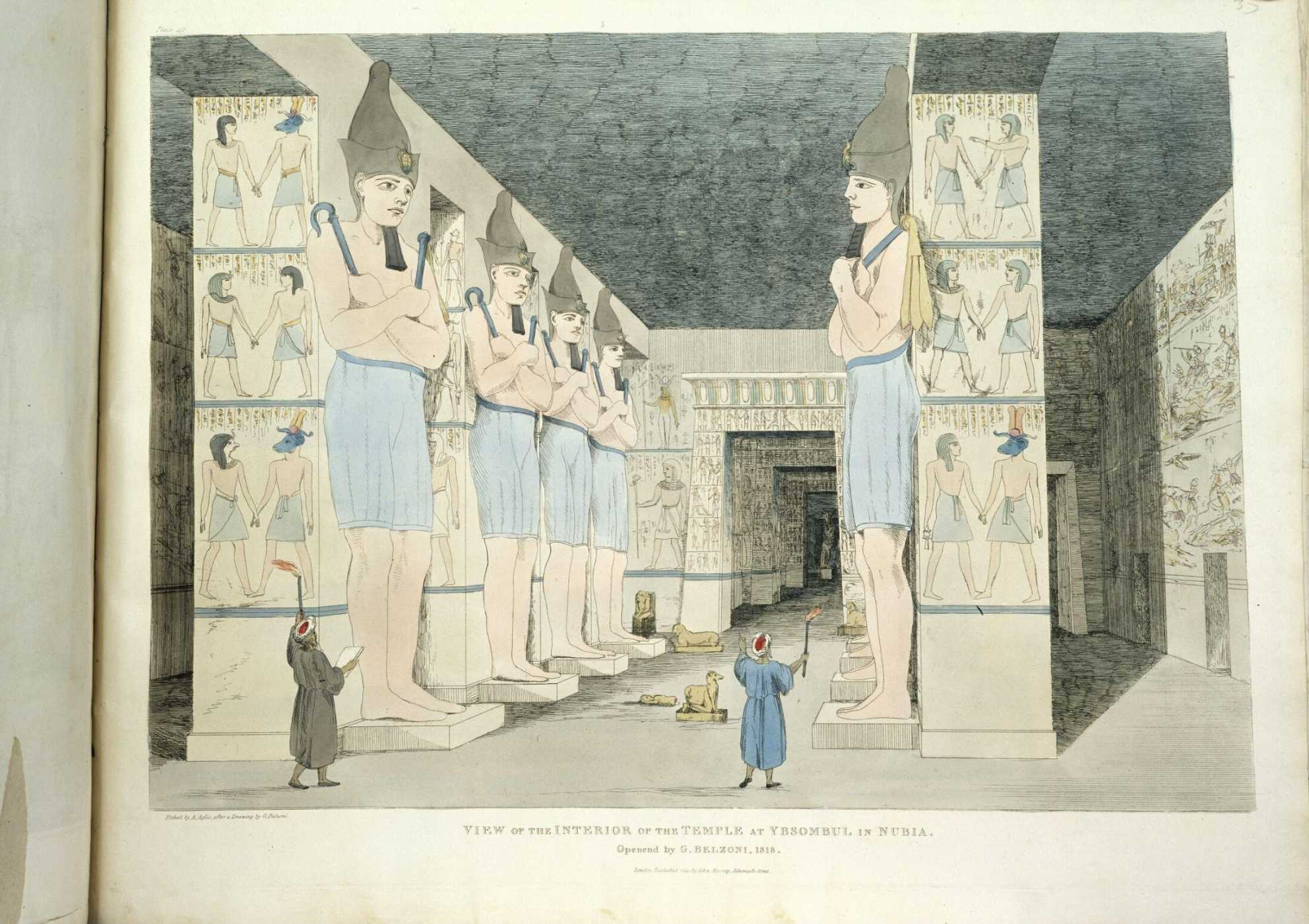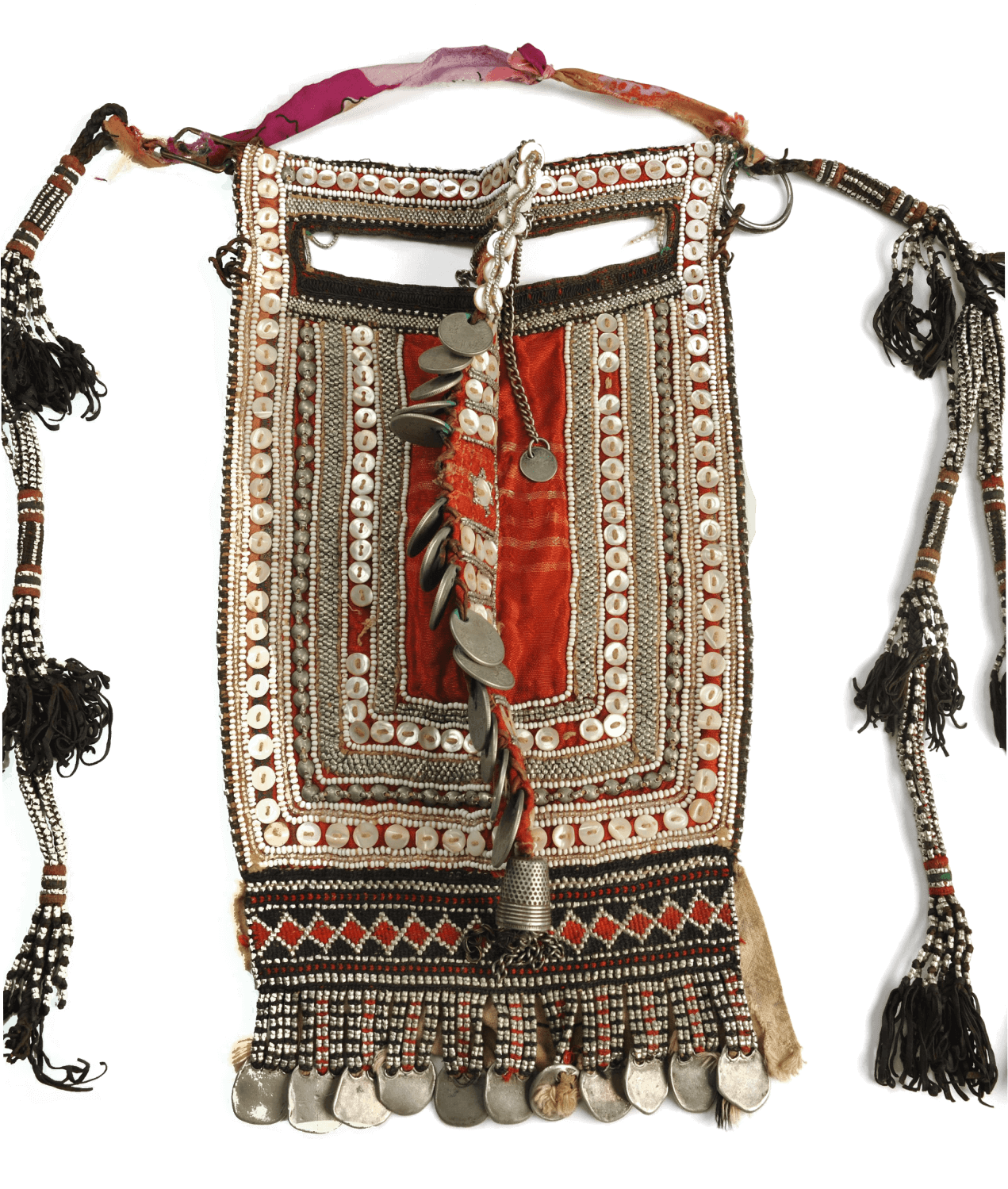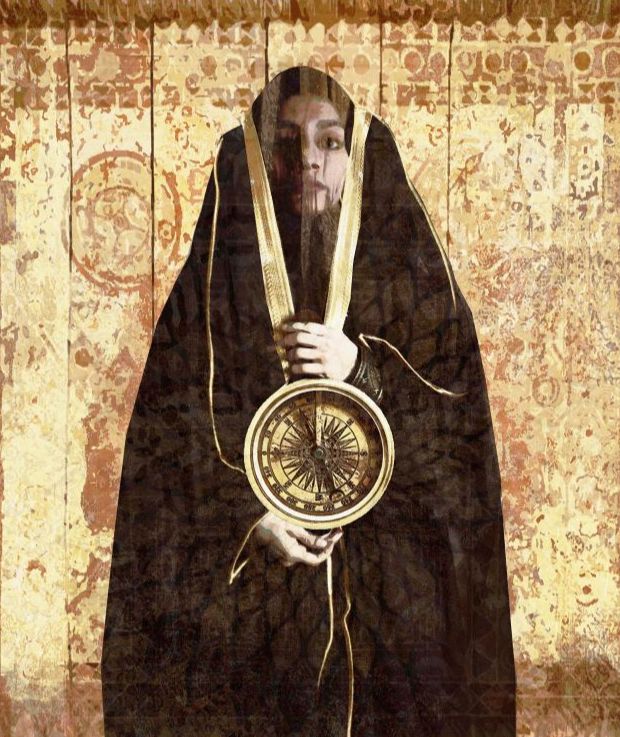The Great Belzoni and the Discovery of the Tomb of Seti I
Portrait of Giovanni Baptista Belzoni. Published by C. Hullmandel, 19th c. Harry Beard Collection. Courtesy of Victoria and Albert Museum, London.
the Great Belzoni, a six-footseven circus strongman and engineer from Padua, entered Seti I’s tomb, the most elaborately decorated in the Valley of the Kings. The pharaoh had built the Great Hypostyle Hall in the temple of Karnak, one of Egypt’s architectural glories, and his tomb was no less resplendent. Belzoni discovered the entrance in an opening in the hillside and descended 400 feet, where he found ten chambers painted in vivid colors and decorated with tens of thousands of hieroglyphs. “The tomb appeared as if just finished the day we entered it,” wrote Belzoni in his diary, having used a battering ram to destroy the sealed door.

Print entitled 'From The Tombs Of The Kings At Thebes, Discovered By G. Belzoni', from 'Plates Illustrative Of The Researches And Operations Of G. Belzoni In Egypt And Nubia' published by John Murray. Volume of plates (44) on 34 sheets, with descriptive text. Great Britain, 1820. Courtesy of Victoria and Albert Museum, London.
“The paintings were more perfect as we advanced farther into the interior,” Belzoni continued. “They retain their gloss, or a kind of varnish over the colors which had a beautiful effect.” The brushes used to paint the lapis lazuli ceiling were scattered on the floor. He named one chamber the “Room of Beauties.” However, as a London-based tomb raider, who had already brought back the huge seven-ton bust of Rameses II to the British Museum, Belzoni, a charismatic orientalist who liked to wear a turban, so that he resembled an Ottoman Grand Vizier, was disappointed not to find the treasures he’d hoped for. Apart from small wood and faience mummified figures, the only object he could pillage was a huge, translucent, alabaster sarcophagus, which was empty, fragments of the lid scattered nearby (the pharaoh’s body had been taken to another royal tomb, where it was discovered in 1881).
Belzoni would bring this sarcophagus, finely carved with hieroglyphs from the Book of Gates, back to London, where he sold it to Sir John Soane. Belzoni also made wax casts and impressions of the walls of the tomb, damaging them in the process. He also commissioned plaster casts of its bas-reliefs, no doubt also to be found on Soane’s crowded walls. In 1820, the Great Belzoni published an account of his adventures, including his drawings of the tomb of Seti I. The following year he opened an exhibition of his objects and replicas in Egyptian Hall in Piccadilly, one of the first buildings constructed in the Egyptian style and also home to displays of magic and the circus arts Belzoni practiced. Nineteen hundred visitors came on the opening day, all paying 2 shillings and 6 pence for admission. The show was a sensation, making Belzoni extremely wealthy. However the sarcophagus was missing, having already been bought by Soane for the princely sum of £2,000. The British Museum had turned it down,

Print entitled 'View Of The Interior Of The Temple At Ybsambul In Nubia. Opened by G. Belzoni, 1818', from 'Plates Illustrative Of The Researches And Operations
Of G. Belzoni In Egypt And Nubia' published by John Murray. Volume of plates (44) on 34 sheets, with descriptive text. Great Britain, 1820. Courtesy of Victoria and Albert Museum, London.
and Soane snapped it up – “his greatest coup as a collector,” he said – and he demolished an exterior wall to get it into his house. Belzoni died two years later, taken ill in the Kingdom of Benin. He was only 45. Now on display in the Sir John Soane’s Museum, it is one of the finest Egyptian antiquities in Britain. The sarcophagus was a symbolic foundation stone for Soane’s aesthetic principles. He intended his house as a memorial, and the empty tomb, which his bust looks down upon, places him right at the heart of his collection. In May 2016, Adam Lowe, the founder of the Factum Foundation for Digital Technology in Conservation in Madrid, began scanning the tomb of Seti I (still sometimes known as Belzoni’s
tomb). He intends to build a $20 million reconstruction; funded by his work by creating contemporary sculptures for the Soane’s new neighbor, Anish Kapoor. Working with The Supreme Council of Antiquities, and using a Lucida 3D scanner, he has already recreated a perfect, high resolution facsimile of the tomb of Tutankhamen, the site famously discovered by Howard Carter – who thought Belzoni “one of the most remarkable characters in the whole history of Egyptology.” Uncanny in their exactitude, they are contemporary versions of Belzoni and Soane’s casts. However, unlike these earlier models, which stripped classical statuary of their color, the taking of these reproductions causes no damage.


